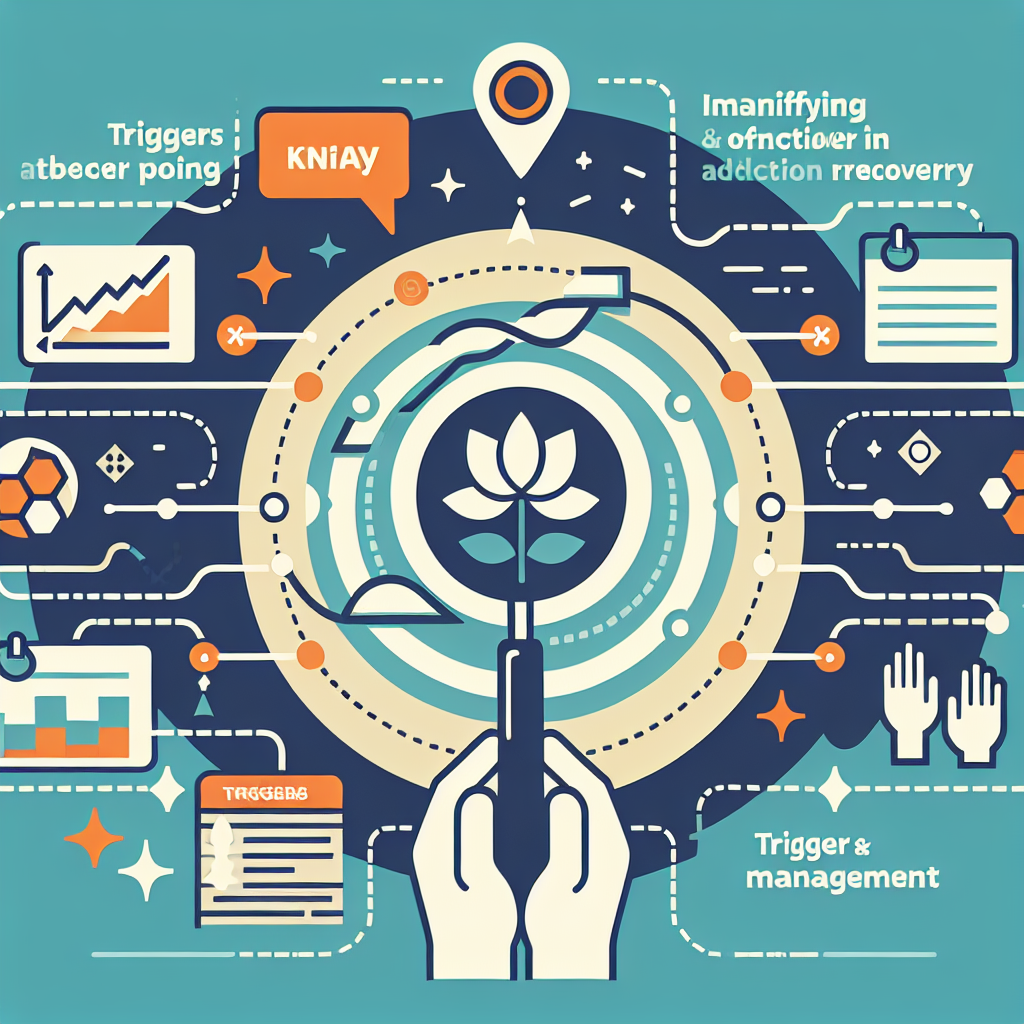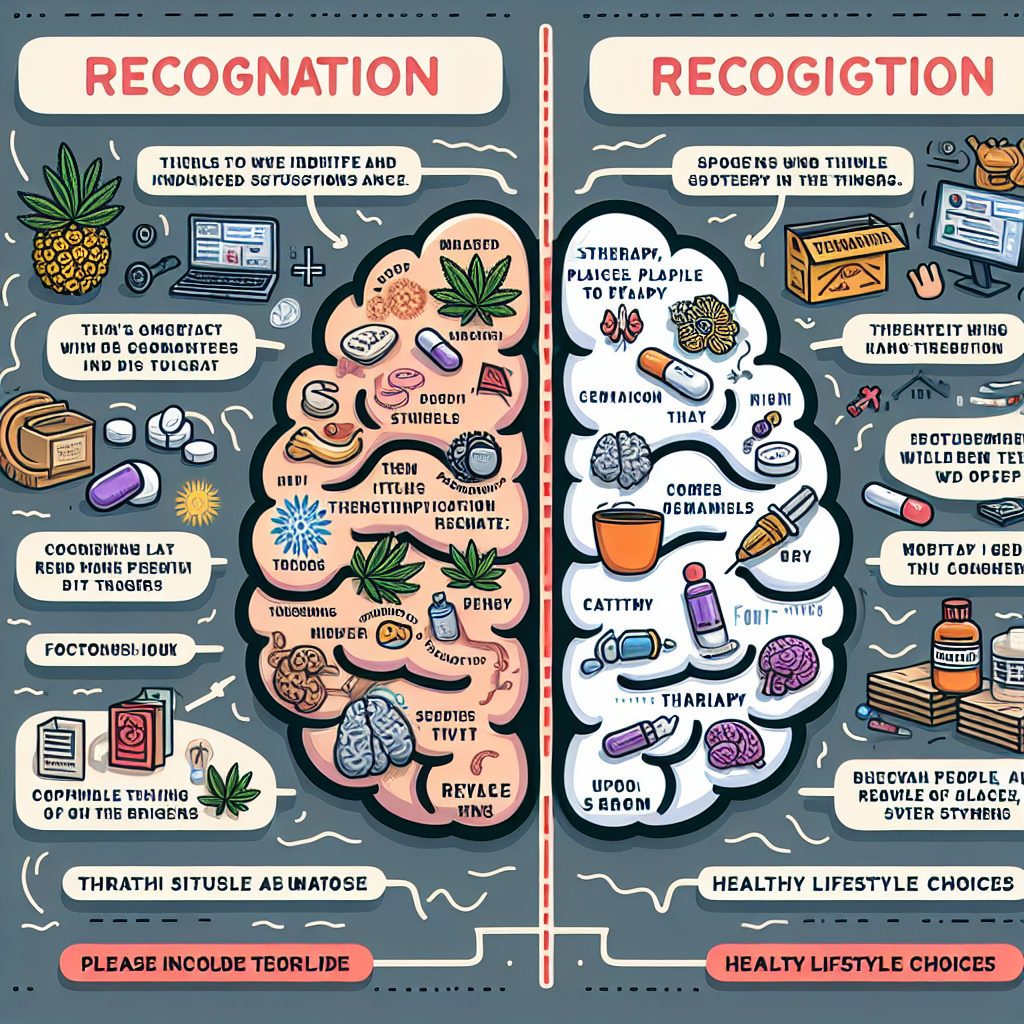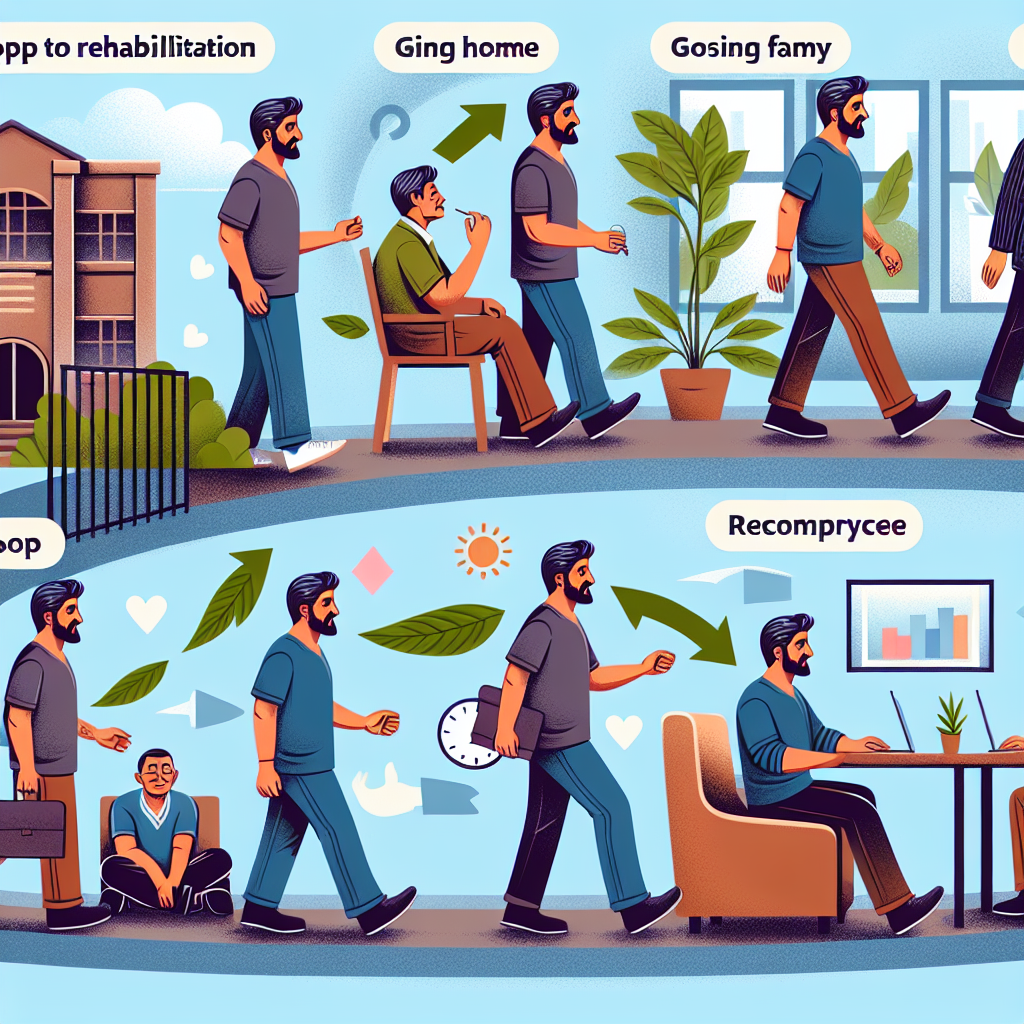-
Table of Contents
- Introduction
- Recognizing Emotional Triggers in Fentanyl Addiction Recovery
- Strategies for Managing Environmental Triggers in Fentanyl Addiction Recovery
- The Role of Support Systems in Identifying and Managing Triggers in Fentanyl Addiction Recovery
- Developing Healthy Coping Mechanisms to Combat Triggers in Fentanyl Addiction Recovery
- Q&A
- Conclusion
“Recognize, Respond, Recover: Mastering Triggers in Fentanyl Addiction Recovery”
Introduction

**Introduction: How to Identify and Manage Triggers in Fentanyl Addiction Recovery**
Fentanyl addiction is a severe and life-threatening condition that requires comprehensive treatment and ongoing management. One of the critical aspects of successful recovery is the identification and management of triggers—situations, emotions, or environments that can provoke cravings and lead to relapse. Understanding these triggers is essential for individuals in recovery, as it empowers them to develop effective coping strategies and maintain long-term sobriety. This introduction will explore the importance of recognizing triggers in fentanyl addiction recovery and provide insights into practical approaches for managing them, thereby enhancing the chances of sustained recovery and overall well-being.
Recognizing Emotional Triggers in Fentanyl Addiction Recovery
Recognizing emotional triggers in fentanyl addiction recovery is a crucial step toward achieving long-term sobriety. Emotional triggers are internal cues that can lead to cravings and potential relapse. These triggers often stem from unresolved feelings, past traumas, or stressful situations. Understanding and managing these emotional triggers can significantly enhance the recovery process, providing a solid foundation for a healthier, drug-free life.
To begin with, it is essential to identify what constitutes an emotional trigger. Emotional triggers can vary widely from person to person, but they generally include feelings of stress, anxiety, depression, loneliness, and even happiness. For instance, a stressful day at work or an argument with a loved one can evoke strong emotions that may lead to the urge to use fentanyl as a coping mechanism. Similarly, positive emotions like excitement or celebration can also serve as triggers, as they may remind individuals of past times when they used drugs to enhance these feelings.
Recognizing these emotional triggers requires a deep level of self-awareness. One effective method is to keep a journal, documenting daily emotions and situations that provoke cravings. Over time, patterns may emerge, revealing specific emotions or circumstances that consistently act as triggers. This practice not only aids in identifying triggers but also provides valuable insights into the emotional landscape of the individual, fostering a greater understanding of their mental and emotional health.
Once emotional triggers are identified, the next step is to develop strategies to manage them. One powerful approach is mindfulness and meditation. These practices encourage individuals to stay present and fully experience their emotions without judgment. By acknowledging and accepting their feelings, individuals can reduce the intensity of their emotional responses and diminish the power of their triggers. Additionally, mindfulness and meditation can help build emotional resilience, making it easier to cope with stress and other challenging emotions.
Another effective strategy is cognitive-behavioral therapy (CBT). CBT helps individuals reframe negative thought patterns and develop healthier coping mechanisms. Through CBT, individuals learn to challenge and change the thoughts that lead to emotional distress and subsequent cravings. This therapeutic approach not only addresses the immediate emotional triggers but also works on the underlying issues that contribute to addiction.
Support systems play a vital role in managing emotional triggers. Engaging with support groups, whether in-person or online, provides a sense of community and shared experience. These groups offer a safe space to express emotions, share challenges, and receive encouragement from others who understand the journey of recovery. Additionally, having a trusted friend or family member to talk to during difficult times can provide immediate emotional relief and prevent the urge to use fentanyl.
Incorporating healthy lifestyle changes can also mitigate the impact of emotional triggers. Regular physical activity, a balanced diet, and adequate sleep contribute to overall well-being and emotional stability. Exercise, in particular, has been shown to reduce stress and anxiety, releasing endorphins that naturally elevate mood. Engaging in hobbies and activities that bring joy and fulfillment can also provide positive emotional outlets, reducing the reliance on substances to cope with feelings.
In conclusion, recognizing and managing emotional triggers in fentanyl addiction recovery is a multifaceted process that requires self-awareness, strategic planning, and support. By identifying triggers, practicing mindfulness, engaging in therapy, building support networks, and adopting a healthy lifestyle, individuals can navigate their emotional landscape more effectively. This holistic approach not only aids in preventing relapse but also fosters a deeper sense of self-understanding and emotional resilience, paving the way for a successful and sustainable recovery journey.
Strategies for Managing Environmental Triggers in Fentanyl Addiction Recovery
In the journey of fentanyl addiction recovery, identifying and managing environmental triggers is a crucial step toward long-term sobriety. Environmental triggers are external cues that can provoke cravings or lead to relapse. These can range from specific locations and social settings to certain objects or even times of the day. Recognizing these triggers and developing strategies to manage them can significantly enhance the chances of maintaining a drug-free life.
To begin with, understanding the nature of environmental triggers is essential. These triggers often have strong associations with past drug use. For instance, a person might feel an overwhelming urge to use fentanyl when they pass by a place where they used to buy or use the drug. Similarly, social gatherings where substance use was prevalent can also act as potent triggers. By identifying these high-risk situations, individuals can take proactive steps to avoid or cope with them.
One effective strategy for managing environmental triggers is to create a supportive and drug-free environment. This might involve making changes at home, such as removing any paraphernalia associated with drug use and ensuring that the living space is clean and organized. Additionally, surrounding oneself with supportive friends and family members who encourage sobriety can provide a strong buffer against potential triggers. Engaging in open and honest communication with loved ones about one’s recovery journey can also foster a supportive network that understands and respects the need to avoid certain environments.
Another important approach is to develop healthy routines and habits that can replace the old, destructive ones. Establishing a structured daily schedule that includes activities such as exercise, hobbies, and work can help keep the mind occupied and reduce the likelihood of encountering triggers. Physical activity, in particular, has been shown to release endorphins, which can improve mood and reduce stress, making it easier to resist cravings.
Mindfulness and stress management techniques can also play a pivotal role in managing environmental triggers. Practices such as meditation, deep breathing exercises, and yoga can help individuals stay grounded and focused, even when faced with challenging situations. By cultivating a sense of inner calm and awareness, it becomes easier to recognize and respond to triggers in a healthy manner. Additionally, therapy and counseling can provide valuable tools and strategies for coping with stress and avoiding relapse.
It is also beneficial to have a plan in place for dealing with unexpected triggers. This might include having a list of supportive contacts to call in moments of weakness, or knowing where to go for a safe and drug-free environment. Being prepared for these situations can make a significant difference in maintaining sobriety.
Lastly, it is important to celebrate progress and acknowledge the hard work that goes into recovery. Each day of sobriety is a victory, and recognizing these achievements can provide motivation to continue on the path of recovery. Setting small, achievable goals and rewarding oneself for meeting them can help build confidence and reinforce positive behaviors.
In conclusion, managing environmental triggers in fentanyl addiction recovery requires a combination of awareness, preparation, and support. By creating a supportive environment, developing healthy routines, practicing mindfulness, and having a plan for unexpected triggers, individuals can navigate their recovery journey with greater resilience and confidence. Remember, recovery is a continuous process, and each step taken towards managing triggers is a step towards a healthier, drug-free life.
The Role of Support Systems in Identifying and Managing Triggers in Fentanyl Addiction Recovery
In the journey of fentanyl addiction recovery, identifying and managing triggers is a crucial aspect that can significantly influence the success of the process. One of the most effective ways to navigate this challenging path is through the support of a robust and understanding network. Support systems, which can include family, friends, healthcare professionals, and support groups, play an indispensable role in helping individuals recognize and cope with the triggers that may lead to relapse.
Firstly, it is essential to understand what triggers are. Triggers are stimuli that can provoke cravings or urges to use fentanyl. These can be external, such as certain environments, people, or situations, or internal, such as emotions, thoughts, or physical sensations. Identifying these triggers is the first step in managing them, and this is where support systems come into play. Family and friends, who often have a deep understanding of the individual’s history and behavior, can provide valuable insights into potential triggers that the person in recovery might not recognize on their own.
Moreover, healthcare professionals, including therapists and counselors, are trained to help individuals in recovery identify their triggers through various therapeutic techniques. Cognitive-behavioral therapy (CBT), for instance, is a common method used to help individuals understand the connection between their thoughts, feelings, and behaviors. Through CBT, individuals can learn to identify their triggers and develop coping strategies to manage them effectively. Support groups, such as Narcotics Anonymous (NA), also offer a platform for individuals to share their experiences and learn from others who have faced similar challenges. The sense of community and shared understanding in these groups can be incredibly empowering and provide practical advice on managing triggers.
Once triggers are identified, managing them becomes the next critical step. This is where the continuous support of a network becomes invaluable. Family and friends can help create a safe and supportive environment that minimizes exposure to known triggers. For example, they can assist in removing drug paraphernalia from the home, avoiding discussions or activities that might provoke cravings, and encouraging healthy lifestyle changes such as regular exercise and a balanced diet. Additionally, they can offer emotional support during difficult times, helping the individual in recovery to navigate through challenging emotions without resorting to substance use.
Healthcare professionals can provide ongoing therapy and counseling to help individuals develop and refine their coping strategies. Techniques such as mindfulness, stress management, and relaxation exercises can be taught and practiced to help manage internal triggers. Support groups continue to offer a space for individuals to discuss their struggles and successes, providing both accountability and encouragement.
Furthermore, it is important to recognize that managing triggers is an ongoing process. Triggers can evolve over time, and new ones can emerge as life circumstances change. Therefore, maintaining a strong support system is crucial for long-term recovery. Regular check-ins with healthcare professionals, continued participation in support groups, and open communication with family and friends can help individuals stay vigilant and prepared to handle new challenges as they arise.
In conclusion, the role of support systems in identifying and managing triggers in fentanyl addiction recovery cannot be overstated. Through the combined efforts of family, friends, healthcare professionals, and support groups, individuals in recovery can gain the insights and tools they need to navigate their triggers effectively. This collaborative approach not only enhances the likelihood of sustained recovery but also fosters a sense of hope and resilience, inspiring individuals to continue their journey towards a healthier, drug-free life.
Developing Healthy Coping Mechanisms to Combat Triggers in Fentanyl Addiction Recovery
In the journey of fentanyl addiction recovery, developing healthy coping mechanisms to combat triggers is crucial for long-term success. Triggers, which can be internal or external cues that lead to cravings or relapse, are a significant challenge for individuals striving to maintain sobriety. Identifying these triggers is the first step in managing them effectively. By understanding what prompts the urge to use fentanyl, individuals can develop strategies to navigate these challenges and build a resilient recovery.
One of the most common internal triggers is emotional distress. Feelings of anxiety, depression, or loneliness can create a powerful urge to seek relief through substance use. To combat these emotional triggers, it is essential to develop healthy coping mechanisms. Mindfulness practices, such as meditation and deep-breathing exercises, can help individuals stay grounded and manage their emotions more effectively. Additionally, engaging in regular physical activity can boost mood and reduce stress, providing a natural way to cope with emotional turmoil.
External triggers, such as certain people, places, or situations, can also pose a significant risk to recovery. For instance, encountering old friends who still use drugs or visiting locations where one previously used fentanyl can reignite cravings. To manage these external triggers, it is important to create a supportive environment. This might involve avoiding certain social circles or finding new, drug-free activities to enjoy. Building a strong support network of friends, family, and recovery groups can provide encouragement and accountability, making it easier to resist the pull of external triggers.
Another effective strategy for managing triggers is to develop a structured daily routine. Having a consistent schedule can provide a sense of stability and purpose, reducing the likelihood of encountering triggers. Incorporating activities that promote well-being, such as hobbies, volunteer work, or educational pursuits, can fill the time that might otherwise be spent dwelling on cravings. By staying busy and engaged in positive activities, individuals can create a buffer against the temptation to use fentanyl.
Cognitive-behavioral therapy (CBT) is another powerful tool in the arsenal against triggers. CBT helps individuals identify and challenge negative thought patterns that can lead to substance use. By learning to reframe these thoughts and develop healthier ways of thinking, individuals can reduce the impact of triggers on their recovery. Working with a therapist trained in CBT can provide valuable insights and techniques for managing cravings and maintaining sobriety.
In addition to these strategies, it is important to practice self-compassion and patience. Recovery is a journey, and setbacks are a natural part of the process. When faced with a trigger, it is crucial to acknowledge the challenge without judgment and to use it as an opportunity to learn and grow. Developing a positive mindset and celebrating small victories can help build resilience and reinforce the commitment to recovery.
Ultimately, the key to managing triggers in fentanyl addiction recovery lies in a combination of self-awareness, healthy coping mechanisms, and a strong support system. By identifying triggers and developing strategies to address them, individuals can navigate the complexities of recovery with greater confidence and hope. With dedication and perseverance, it is possible to overcome the challenges of addiction and build a fulfilling, drug-free life.
Q&A
1. **Question:** What are common triggers for fentanyl addiction relapse?
**Answer:** Common triggers include stress, exposure to environments or people associated with past drug use, emotional distress, and physical pain.
2. **Question:** How can one identify personal triggers in fentanyl addiction recovery?
**Answer:** Keeping a detailed journal of emotions, situations, and cravings can help identify patterns and specific triggers.
3. **Question:** What strategies can be used to manage triggers in fentanyl addiction recovery?
**Answer:** Strategies include developing a strong support network, engaging in regular therapy, practicing mindfulness and stress-reduction techniques, and avoiding high-risk situations.
4. **Question:** Why is it important to have a relapse prevention plan in fentanyl addiction recovery?
**Answer:** A relapse prevention plan provides structured strategies and resources to handle triggers and cravings, reducing the risk of relapse and supporting long-term recovery.
Conclusion
Identifying and managing triggers in fentanyl addiction recovery involves several key steps. First, individuals must recognize personal triggers, which can be internal (emotions, thoughts) or external (people, places, situations). Keeping a detailed journal can help in identifying patterns and specific triggers. Once identified, developing coping strategies is crucial. This can include cognitive-behavioral techniques, mindfulness practices, and stress management skills. Seeking support from therapy, support groups, and healthcare professionals is also essential. Creating a structured daily routine and avoiding high-risk situations can further aid in managing triggers. Overall, a comprehensive approach combining self-awareness, coping mechanisms, and professional support is vital for successful fentanyl addiction recovery.



